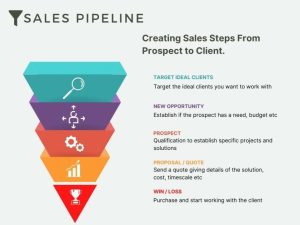Existing customer? Sign in
Mastering Software Testing: Tips & Insights

Did you know that software defects cost the global economy an estimated $1.7 trillion annually? The importance of software testing cannot be overstated, as it is crucial for ensuring the quality, functionality, and reliability of software applications. Whether it’s automated testing or manual testing, functional testing or regression testing, or even performance testing, an effective software testing strategy is integral to successful software development.
In this comprehensive guide, we will provide expert tips and insights for mastering software testing. From understanding the principles of software testing to exploring the role of testers and the software testing life cycle, we will cover a wide range of topics to help you enhance your testing skills and deliver high-quality software.
Key Takeaways:
- Software defects cost the global economy $1.7 trillion annually.
- Software testing is essential for ensuring the quality, functionality, and reliability of software applications.
- Mastering software testing requires understanding principles, best practices, and various testing techniques.
- Automated testing, manual testing, functional testing, regression testing, and performance testing are all important aspects of software testing.
- Testers play a vital role in the software testing process, contributing to the overall success and reliability of the software.
The Role of Testers in Software Testing
Testers play a vital role in the software testing process. They are not just test executors, but also involved in various other aspects that contribute to delivering high-quality software.
Test Planning
Detailed test planning is one of the crucial responsibilities of testers. They collaborate with the development team to understand the software requirements and identify potential testing scenarios. Testers create test plans that outline the scope, objectives, and strategies for testing the software. These plans serve as a roadmap for the testing process and ensure comprehensive coverage.
Test Execution and Bug Identification
Once the test plans are in place, testers execute the tests according to the defined scenarios. They meticulously step through each test case, executing the test steps and comparing the actual results against the expected outcomes. During this process, testers identify and report any defects or bugs they encounter. They provide detailed information about the issues, including steps to reproduce, to help the development team resolve them effectively.
Verification of Fixes
After the development team fixes the reported issues, it is the responsibility of the testers to verify the fixes. They rerun the affected test cases and ensure that the reported bugs have been addressed adequately. This step helps ensure that the software is stable and functions as intended after the bug fixes.
Usability Testing
Usability testing is an essential aspect of software testing, focusing on evaluating the software’s user-friendliness and overall user experience. Testers simulate real-world scenarios to assess how easily users can interact with the software, navigate through various features, and accomplish intended tasks. By providing valuable insights, testers contribute to improving user interaction and enhancing the overall usability of the software.
Quality Metrics
Testers are responsible for monitoring and analyzing quality metrics throughout the testing process. They track and report on key performance indicators, such as defect density, test coverage, and test execution status. These metrics help stakeholders gauge the progress of testing efforts and make informed decisions about the software’s readiness for release.
Creating Checklists
Testers often create checklists to ensure consistency and accuracy in testing activities. These checklists serve as a guide, reminding testers of important test steps, configurations, and validation criteria. By following checklists, testers maintain a structured approach to testing, minimizing the risk of missing critical scenarios.
<!–
| Responsibilities | Key Tasks |
|---|---|
| Test Planning | Collaborate with development team for requirements understanding Create comprehensive test plans |
| Test Execution and Bug Identification | Execute test cases Identify and report defects |
| Verification of Fixes | Rerun test cases after bug fixes Ensure fixes are effective |
| Usability Testing | Evaluate user-friendliness and user experience Provide insights for improvement |
| Quality Metrics | Monitor and report key performance indicators |
| Creating Checklists | Create structured guidelines for testing |
–><!–
–>
Principles of Software Testing
Software testing principles serve as fundamental guidelines and concepts that form the foundation of effective software testing practices. These principles are essential for performing systematic and comprehensive testing to identify defects and improve software quality.
One of the key principles is the understanding that testing shows the presence of defects but cannot prove their absence. This means that even if a software passes testing, it doesn’t guarantee it is entirely defect-free. Therefore, testing must be an ongoing process to mitigate risks associated with undetected defects.
Exhaustive testing, which aims to test every possible combination and permutation of inputs and system states, is impractical. It would require an unrealistic amount of time and resources. Instead, testers must employ risk-driven testing, focusing on high-risk areas and critical functionalities.
Early testing is crucial for identifying and resolving defects at the earliest stages of the development process. By detecting and fixing defects early, the overall cost and effort required for bug fixing are significantly reduced.
Defect clustering is another principle that recognizes that defects tend to cluster in specific areas or modules of the software. By identifying and targeting these areas during testing, testers can effectively uncover a substantial number of defects.
Testing is context-dependent, meaning that testing strategies, techniques, and approaches should be tailored to the specific characteristics and requirements of the software being tested. There is no one-size-fits-all approach.
The pesticide paradox principle states that using the same set of tests repeatedly will eventually become ineffective, as the tests will no longer find new defects. Testers need to regularly update and diversify the test cases to ensure maximum coverage.
Testing is an iterative process, involving repetitive cycles of planning, execution, and evaluation. Each iteration allows for the identification of new defects and the refinement of testing strategies based on the feedback received from earlier cycles.
The myth of complete testing acknowledges that achieving absolute and comprehensive testing is practically impossible. Instead, testers focus on achieving sufficient coverage based on defined criteria and risk analysis.
Test documentation is crucial for maintaining clarity and consistency throughout the testing process. Well-documented test cases, test plans, and test reports facilitate transparency and support collaboration among testing teams.
Testing by independent teams is an important principle that ensures impartiality and objectivity in the testing process. Having separate teams responsible for testing allows for a fresh perspective and helps uncover blind spots that might be missed by developers.
Test automation is a key principle that can significantly improve the efficiency and effectiveness of software testing. Automating repetitive and time-consuming test cases allows testers to focus on more complex and critical areas of the software.
In summary, understanding and applying these software testing principles is crucial for implementing effective testing strategies and improving software quality. By adhering to these principles, testers can optimize their testing efforts and ensure the delivery of reliable and high-quality software.
The Test Pyramid: A Strategy for Effective Testing
The test pyramid is a widely accepted strategy that promotes an effective and balanced approach to software testing. It emphasizes the distribution of different testing levels to ensure the overall quality and robustness of the software.
At the base of the test pyramid, we find Unit Testing. This level focuses on testing individual components or units of code to verify their correctness and functionality. Unit testing helps identify defects early in the development process and provides a solid foundation for subsequent testing levels. Commonly used tools for unit testing include JUnit for Java applications and NUnit for .NET applications.
Moving up the pyramid, we reach the Integration Testing level. Integration testing aims to uncover defects that may arise from the interaction between different modules or components of the software. It ensures that integrated parts work harmoniously and effectively as a whole. Popular tools for integration testing include Selenium for web applications and Apache JMeter for performance testing.
Next, we have the System Testing level, which focuses on verifying the behavior of the entire system. System testing evaluates the functionality and performance of the software as a complete unit, including its interactions with external systems. Tools such as TestComplete and Robot Framework are commonly used for system testing.
Finally, the topmost level of the test pyramid is Acceptance Testing. This level involves testing the software’s compliance with customer requirements and expectations. Acceptance testing ensures that the software meets the desired specifications and is ready for deployment. Key tools for acceptance testing include Cucumber for behavior-driven development and Selenium WebDriver for UI testing.
The test pyramid follows the principle of a balanced distribution of testing efforts across these different levels. By incorporating all levels of testing, organizations can achieve a comprehensive and well-rounded testing approach. This balanced test pyramid not only helps in identifying defects early but also reduces the cost and effort associated with fixing issues at later stages of the development lifecycle.
Let’s take a look at the test pyramid:
| Testing Level | Purpose | Examples of Tools |
|---|---|---|
| Unit Testing | Verify individual components or units | JUnit for Java, NUnit for .NET |
| Integration Testing | Test interaction between modules or components | Selenium for web applications, Apache JMeter for performance testing |
| System Testing | Evaluate the entire system | TestComplete, Robot Framework |
| Acceptance Testing | Verify compliance with customer requirements | Cucumber, Selenium WebDriver |
By strategically implementing the test pyramid, organizations can achieve a comprehensive and efficient testing process that ensures software quality and reliability.
Illustration of the Test Pyramid
Interface Testing: UI, API, Database, and Mobile
Interface testing is a critical aspect of software testing that ensures the smooth functioning of software applications. This section will explore various types of interface testing, including UI testing, API testing, database testing, and mobile testing.
UI Testing
UI testing focuses on evaluating the user interface of software applications to ensure a seamless user experience. It involves testing elements such as layout, design, responsiveness, and overall usability. By conducting UI testing, software testers can identify and resolve any issues or inconsistencies that may hinder the user’s interaction with the application.
API Testing
API testing verifies the functionality and data exchange between different software components. It ensures that APIs (Application Programming Interfaces) are functioning as expected, providing accurate data and delivering the desired results. Through comprehensive API testing, testers can ensure seamless interaction between software components and identify any potential issues or errors.
Database Testing
Database testing is essential for maintaining data integrity and accuracy within software applications. It involves validating data stored in databases, ensuring proper data retrieval, manipulation, and storage. By conducting database testing, you can mitigate the risk of data corruption or loss, ensuring the reliability and efficiency of the application.
Mobile Testing
Mobile testing is conducted to ensure that software applications function correctly across various mobile platforms and devices. It involves testing the compatibility, responsiveness, and performance of applications on mobile devices. By performing thorough mobile testing, testers can uncover any issues related to mobile-specific features, screen resolutions, and device-specific functionalities.
In addition to these types of interface testing, it is crucial to address cross-browser compatibility testing, API documentation, and mobile app performance testing.
Cross-browser compatibility testing ensures that software applications work seamlessly across different web browsers and versions. This testing helps identify any inconsistencies or issues that may arise due to browser-specific features or compatibility limitations.
API documentation plays a crucial role in facilitating the integration of different software components. It provides comprehensive guidelines and instructions for developers to understand and implement APIs effectively.
Mobile app performance testing focuses on assessing the performance and responsiveness of software applications on mobile platforms. It involves evaluating factors such as loading speed, resource utilization, battery consumption, and overall user experience on mobile devices.
Overall, interface testing is essential for delivering high-quality software applications that meet user expectations and requirements. By ensuring the seamless functioning of the user interface, APIs, databases, and mobile platforms, software testers contribute to the overall success and reliability of the software.
| Type of Interface Testing | Description |
|---|---|
| UI Testing | Evaluates the user interface of software applications, focusing on layout, design, and usability. |
| API Testing | Verifies the functionality and data exchange between different software components. |
| Database Testing | Validates the integrity and accuracy of data stored within the software application’s databases. |
| Mobile Testing | Ensures the proper functioning of software applications on mobile platforms and devices. |
| Cross-Browser Compatibility Testing | Ensures software applications work seamlessly across different web browsers and versions. |
| API Documentation | Provides comprehensive guidelines and instructions for developers to understand and implement APIs. |
| Mobile App Performance Testing | Assesses the performance and responsiveness of software applications on mobile platforms. |
Software Testing Life Cycle
The software testing life cycle (STLC) is a structured approach to software testing that ensures rigorous testing and enhances software quality. It provides a systematic framework for testers to follow, ensuring that every aspect of the testing process is covered. The STLC consists of several phases, each with its specific objectives and activities. Let’s take a closer look at the different phases of the software testing life cycle:
Test Planning
Test planning is the initial phase of the software testing life cycle. It involves defining the scope of testing, determining the testing objectives, identifying the resources required, and creating a detailed test plan. The test plan outlines the testing strategy, test environment setup, and testing schedules. It also includes the identification of test deliverables and milestones in the testing process.
Test Case Design
Test case design is the process of creating test cases that cover all the functional and non-functional aspects of the software. Test cases are specific scenarios or conditions that need to be tested to ensure proper functionality of the software. Test case design involves deriving test cases from requirements, creating test data, and documenting the expected outcomes. It is crucial to have comprehensive test case coverage to identify any defects or issues in the software.
Test Execution
Test execution is the phase where the actual testing takes place. Testers execute the test cases, record the results, and compare the actual outcomes with the expected outcomes. Defects or issues found during the test execution phase are logged in a bug tracking system for further investigation and resolution. Test execution involves thorough and systematic testing to ensure that all aspects of the software are verified and validated.
Continuous Integration and Continuous Testing
Continuous integration and continuous testing are modern practices that aim to integrate testing into the software development process from the early stages. Continuous integration involves frequently merging code changes into a central repository, allowing developers to catch integration issues early. Continuous testing complements continuous integration by automatically running tests on the integrated code to detect any defects or regressions. These practices help identify issues early in the development cycle, leading to faster feedback and higher software quality.
In conclusion, the software testing life cycle is a vital process that ensures the quality and reliability of software applications. Test planning, test case design, test execution, and continuous integration and continuous testing are essential phases in this cycle. By following a structured approach to testing, organizations can minimize defects, enhance customer satisfaction, and deliver high-quality software products.
Bug Life Cycle: From Identification to Resolution
Bugs are an inevitable part of software development, and efficient bug tracking and management are crucial for maintaining software integrity. Understanding the life cycle of a bug is essential for effectively managing and resolving software defects. This section will provide a detailed overview of the bug life cycle, covering the stages from identification to resolution.
Bug Reporting
When a bug is identified, it needs to be reported to the development team. This involves providing detailed information about the bug, including its symptoms, steps to reproduce, and any relevant screenshots or logs. Clear and comprehensive bug reports expedite the resolution process, ensuring that developers have the necessary information to understand and address the issue.
Bug Triage
After bug reports are received, they go through a triage process. The purpose of bug triage is to prioritize the reported bugs based on their severity, impact on the system, and the resources available for debugging. The bug triage team assigns a priority and severity level to each bug, ensuring that critical issues are addressed with urgency.
Bug Resolution
Once a bug is assigned to a developer, they begin working on resolving the issue. This involves identifying the root cause of the bug, making the necessary code changes, and ensuring that the fix does not introduce new defects. The developer then performs unit testing on the fix to confirm its effectiveness before forwarding it for further testing.
Bug Verification
After a bug fix is implemented, the testing team verifies the resolution to ensure that the bug has been successfully addressed. This includes retesting the affected area of the software, verifying that the bug no longer occurs, and conducting additional testing to validate that the fix did not introduce any new issues.
Bug Closure
Once the bug is verified as resolved, it is marked as closed. The bug tracking system updates the bug status to indicate that it has been successfully addressed. Closed bugs are then archived for future reference and analysis.
Effective bug tracking tools play a vital role in streamlining the bug life cycle. These tools provide a centralized platform for reporting, tracking, and managing bugs, facilitating efficient communication between developers, testers, and stakeholders. With the help of bug tracking tools, teams can effectively collaborate on bug resolution, ensuring that software defects are resolved in a timely and systematic manner.
By understanding the bug life cycle and employing robust bug tracking and management practices, software development teams can ensure the timely resolution of bugs, enhancing the quality and reliability of their software products.
Conclusion
Mastering software testing is crucial to ensure the quality, functionality, and reliability of software applications. This comprehensive guide has provided valuable tips and insights into various aspects of software testing, including automated and manual testing, functional and regression testing, performance testing, test management, creating effective test cases and test plans, and bug tracking and management.
By following the principles and best practices outlined in this guide, software testers can enhance the overall quality and reliability of software products. It is essential to understand the fundamentals of software testing and apply the right techniques and methodologies to identify and rectify defects, ensuring that the software performs as intended and meets the user’s requirements.
Software testing not only helps in delivering a high-quality product but also contributes to customer satisfaction. Thorough testing leads to the detection and resolution of bugs and issues, ultimately improving the user experience. Moreover, effective test management enables better control and visibility over the testing process, ensuring that all necessary tests are executed, and defects are tracked and resolved efficiently.
By embracing the insights and tips shared in this guide, software testers can strengthen their skills in software testing and become invaluable contributors to the software development process. With a focus on continuous improvement and adherence to industry-standard practices, mastering software testing is within reach, enabling the creation of reliable and successful software products.
FAQ
What is software testing?
Software testing is the process of evaluating a software application to ensure that it meets the specified requirements, performs as expected, and is free of defects.
What is the role of testers in software testing?
Testers play a vital role in software testing. They are involved in test planning, test execution, verification of fixes, usability testing, and keeping track of quality metrics to ensure the delivery of a high-quality product.
What are the principles of software testing?
The principles of software testing include understanding that testing shows the presence of defects but cannot prove their absence, that exhaustive testing is impractical, and the importance of early testing and context-dependent testing, among others.
What is the test pyramid?
The test pyramid is a concept that emphasizes maintaining a balanced distribution of testing levels, including unit testing, integration testing, system testing, and acceptance testing.
What is interface testing?
Interface testing includes different types of testing, such as UI testing, API testing, database testing, and mobile testing, to ensure a seamless user experience and functionality between software components.
What is the software testing life cycle?
The software testing life cycle is a structured approach that includes test planning, test case design, test execution, and continuous integration and testing to enhance software quality.
What is the bug life cycle?
The bug life cycle refers to the stages of a software bug, from identification to resolution, including reporting, triage, and resolution. Effective bug tracking and management are crucial for maintaining software integrity.
Source Links
- https://www.linkedin.com/pulse/mastering-software-testing-landscape-comprehensive-guide-waqas-waheed-ioraf?trk=article-ssr-frontend-pulse_more-articles_related-content-card
- https://www.linkedin.com/pulse/mastering-art-software-testing-guide-testers-stefano-santilli-fpomf
- https://medium.com/@hiren.topstech/master-the-fundamentals-your-step-by-step-guide-to-software-testing-1fb0910c2953




